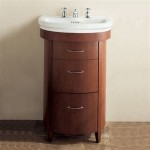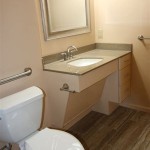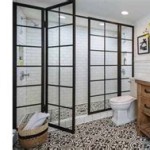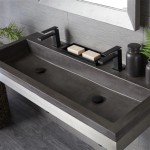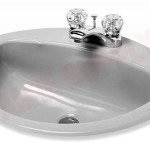Counter Sink Design Bathrooms with Integrated Shower Caddies: A Functional and Aesthetic Solution
Counter sink design bathrooms represent a modern approach to maximizing space and functionality, particularly in smaller bathrooms. Integrating a shower caddy within the overall design elevates this concept further, offering a seamless blend of storage and aesthetics. This article explores the nuances of counter sink design bathrooms with integrated shower caddies, focusing on key considerations for planning, material selection, installation, and maintenance.
The traditional bathroom layout often features a standalone sink vanity and a separate shower area with a surface-mounted or hanging shower caddy. Counter sink designs, however, aim to streamline this approach. By integrating the sink directly into the countertop and, subsequently, incorporating a shower caddy into the surrounding space or within the shower enclosure itself, a more cohesive and efficient bathroom environment is created. This design philosophy can significantly enhance the perceived size of the room and contribute to a minimalist aesthetic.
Choosing the appropriate counter sink style is crucial. Undermount sinks offer a clean, seamless look, as they are installed beneath the countertop. This allows for easy cleaning and maximizes counter space. Vessel sinks, on the other hand, sit atop the counter, providing a more dramatic and eye-catching focal point. Integrated sinks, where the sink and countertop are crafted from a single piece of material, offer a modern and hygienic solution with minimal seams. The selection should be based on the bathroom's overall style, the available space, and personal preferences.
The integration of the shower caddy is where functional design truly shines. Its placement and design should be considered early in the planning phase to ensure seamless integration and accessibility within the shower area. The design possibilities range from recessed niches within the shower wall to custom-built shelving units integrated into the counter extension, or even strategically placed vertical strips with holes in them, as described in the previous prompt. This integration minimizes clutter and optimizes storage for essential shower products.
Key Considerations for Planning and Design
Planning a counter sink design bathroom with an integrated shower caddy requires careful consideration of several factors. These include the available space, the desired aesthetic, the user's needs, and the plumbing requirements. Failing to address these aspects early on can lead to costly revisions and unsatisfactory results.
One of the primary considerations is the size and layout of the bathroom. Smaller bathrooms benefit most from space-saving designs, such as wall-mounted faucets and shallow sinks. Integrating the shower caddy into the available wall space, perhaps with recessed niches, is a practical solution. Larger bathrooms offer more flexibility, allowing for more elaborate designs, such as custom-built shelving units incorporated into the counter extension. Determining the optimal placement and size of the sink and shower caddy is essential for maximizing functionality and creating a visually appealing space.
The plumbing requirements for both the sink and the shower must be carefully considered. The location of the water supply lines and drainpipes will influence the placement of the sink and the overall design of the countertop. Similarly, the shower plumbing needs to be considered when integrating the shower caddy into the shower enclosure. It is crucial to ensure that all plumbing work meets local building codes and regulations. Consulting with a qualified plumber is highly recommended to avoid potential problems during and after installation.
Accessibility is another important factor to consider, especially for individuals with mobility limitations. The sink height should be appropriate for comfortable use, and the shower caddy should be easily accessible from a seated or standing position. Grab bars may be necessary to provide additional support and safety within the shower area. Universal design principles should be applied to ensure that the bathroom is accessible and usable by people of all abilities.
Aesthetic considerations play a significant role in the overall design. The style of the sink, countertop, and shower caddy should complement the overall theme of the bathroom. Color palettes, materials, and finishes should be carefully selected to create a cohesive and harmonious look. Incorporating natural light and proper ventilation can further enhance the ambiance of the bathroom.
Material Selection and Durability
The choice of materials for the countertop, sink, and shower caddy is critical for both aesthetics and durability. The materials should be water-resistant, easy to clean, and able to withstand the humidity and temperature fluctuations common in bathrooms. Poor material selection can lead to premature wear and tear, mold growth, and costly repairs.
For countertops, popular choices include granite, quartz, marble, and solid surface materials. Granite is a natural stone known for its durability and unique patterns. Quartz is an engineered stone that is highly resistant to scratches, stains, and heat. Marble is a luxurious natural stone that requires more maintenance but offers a timeless elegance. Solid surface materials, such as Corian, are non-porous and easy to clean, making them a practical choice for bathrooms.
Sink materials include porcelain, fireclay, stainless steel, and stone. Porcelain is a classic choice that is durable and easy to clean. Fireclay is a more durable type of ceramic that is resistant to chipping and cracking. Stainless steel is a modern and hygienic option that is often used in contemporary bathrooms. Stone sinks offer a natural and organic look but may require more maintenance.
The materials used for the shower caddy should be water-resistant and durable enough to withstand constant exposure to moisture. Common options include stainless steel, tile, glass, and plastic. Stainless steel is resistant to rust and corrosion and offers a clean and modern look. Tile is a versatile option that can be customized to match the shower wall. Glass shelves can add a touch of elegance but require regular cleaning to prevent water spots. Plastic shower caddies are a more affordable option but may not be as durable as other materials.
When selecting materials, it is essential to consider the long-term maintenance requirements. Some materials, such as marble, require regular sealing to prevent staining. Others, such as stainless steel, may require special cleaning products to maintain their shine. Choosing materials that are easy to clean and maintain will help keep the bathroom looking its best for years to come.
Installation and Maintenance Best Practices
Proper installation is crucial for the longevity and functionality of a counter sink design bathroom with an integrated shower caddy. Incorrect installation can lead to leaks, structural damage, and safety hazards. Hiring a qualified contractor with experience in bathroom renovations is highly recommended.
The installation process typically involves several steps, including demolition of the existing bathroom, plumbing and electrical work, installation of the countertop and sink, and integration of the shower caddy. It is essential to ensure that all plumbing and electrical connections are properly installed and comply with local building codes. The countertop should be level and securely attached to the vanity. The shower caddy should be properly sealed to prevent water damage.
Once the installation is complete, regular maintenance is necessary to keep the bathroom in good condition. This includes cleaning the sink, countertop, and shower caddy regularly to prevent the buildup of soap scum, mold, and mildew. Using appropriate cleaning products and following the manufacturer's instructions is essential.
It is also important to inspect the plumbing regularly for leaks and to address any issues promptly. Leaky faucets and pipes can waste water and cause water damage to the surrounding areas. Sealing the grout lines in the shower can help prevent water penetration and mold growth. Replacing worn or damaged caulk can also help prevent leaks.
Proper ventilation is essential for preventing moisture buildup and mold growth in the bathroom. Ensuring that the exhaust fan is working properly and using it during and after showers can help reduce humidity levels. Opening windows whenever possible can also help improve ventilation.
By following these installation and maintenance best practices, homeowners can ensure that their counter sink design bathroom with an integrated shower caddy remains functional, aesthetically pleasing, and durable for years to come. Careful planning, proper material selection, and diligent maintenance are the keys to a successful bathroom renovation.

Pin On Luxurious Bath Retreat

Wall Mounted Bathroom Storage Rack With Drain Sink Shelf And Shower Caddy Organizer Maximize Space Organize Your Temu Mexico

Bathroom Vanity Idea An Open Shelf Below The Countertop 17 Pictures

Pin On Bath With Shower Ideas

Under Sink Storage Ideas For Your Home Designcafe

Decorrack Portable Shower Caddy Thermoplastic Bath Organizer Basket With Handle And 4 Sections Com

5 Easy Ways To Declutter Your Bathroom Countertop

Bathroom Storage Solutions Small Space S Tricks Sinks

Shower Shelf

21 Bathroom Storage And Organization Ideas How To Organize Your Counter Vanity
Related Posts
